The Race to the Moon
Apollo 16 was the penultimate mission that landed people on the Moon. 
The crew was Commander John Young (right, center), Command Module Pilot Ken Mattingly (right, left), and Lunar Module Pilot Charlie Duke. Young was a very experienced astronaut, having flown aboard Gemini 3, Gemini 10, and Apollo 10. Duke and Mattingly were experienced fighter pilots but were making their first spaceflight. The people in charge of the American space program knew that funding for missions past Apollo 17 had been cut, so they knew that they had two missions left in which to find out as much as they could about the Moon's surface and surrounds. In particular, scientists wanted evidence with which to evaluate their theory that some lunar highlands and other features were caused by volcanism. After examining photographs taken by Apollo 14, they chose to land in the lunar highlands. As did the Apollo 15 crew, Young and Duke undertook extensive geological training, including field trips to various rock formations in New Mexico and in Canada. For his part, Mattingly trained by observing terrestrial geological formations from an airplane. 
Launch date was April 16, 1972. One experiment that the crew performed en route to the Moon involved light flashes. Crews as far back as Apollo 11 had reported seeing light flashes in the dark of space, even when they had their eyes shut. The crew wore a special helmet that was designed to track the movements of cosmic rays. Subsequent analysis proved NASA's theory that the astronauts were indeed observing cosmic rays. The crew entered lunar orbit three days later. Young and Duke touched down in the Descartes region of the central lunar highlands on April 20 and stepped out in that order. They had landed later than planned because of a slight malfunction in the Command Service Module. That delay would result in less time on the Moon and a return home a day earlier than planned. 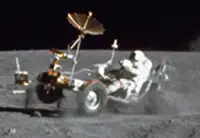
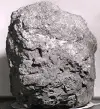
The Lunar Roving Vehicle, unveiled on Apollo 15, again featured in the extravehicular activity (EVA) of the astronauts, allowing them to range farther from the spacecraft than ever before. They covered nearly 17 miles, exploring several craters, taking pictures, recording data, and taking samples of both dust and rocks. They returned with the largest Moon rock of them all, named Big Muley. Duke plucked the 26-pound rock from the surface and made sure it got back to Earth. They did three EVAs in all. On the third day, they did close observation of a giant rock that they named House Rock, proving that it was a breccia (meaning made of a collection of minerals), not the result of a volcanic eruption. The rendezvous with the Command Module was uneventful, as was the trip home. The crew splashed down on April 27. Apollo 17Apollo 17 was the last mission to land people on the Moon. It ran Dec. 7–19, 1972. 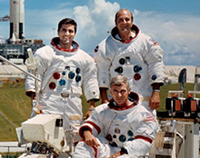
Commanding the crew was Gene Cernan (right, seated). Joining Cernan on the lunar surface was Lunar Module Pilot Harrison Schmitt (right, left). Orbiting the Moon while those were on the Moon was Command Module Pilot Ron Evans (right, right). The crew named their Command Module America and their Lunar Module Challenger. As did the Apollo 15 and Apollo 16 crews, Cernan, Evans, and Schmitt undertook extensive geological training, including field trips to various rock formations in Canada. Schmitt was a professional geologist 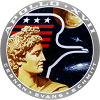
Launch date was Dec. 7, 1972. The Lunar Module landed in the Taurus-Littrow valley, somewhere no previous crew had been. Cernan was the first to set foot on the surface; Schmitt followed. 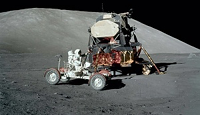
As before, the lunar surface crew took samples of lunar dust and rocks. They also set up scientific instruments. One of the most high-profile instruments was the Traverse Gravimeter Experiment (TGE). The astronauts took gravity measurements at their landing site and at several other points in their travels. (They had use of the Rover vehicle, as had their two predecessors.) The focus of the data back on Earth would be geology. Another geologic instrument deployed was the lunar sounder, which beamed electromagnetic pulses at the lunar surface; scientists hoped to use this data to help built a geological model of the Moon's interior. 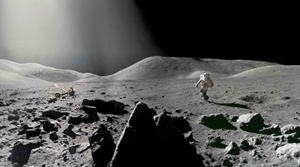
The astronauts performed three EVAs in all. When it was time to leave, they reversed their order; thus, Cernan was the last to walk on the Moon. Their rendezvous with Evans in the Command Module proceeded without incident, as did the return to Earth, during which Evans conducted a 67-minute EVA to recover film in an exterior camera. The Command Module Pilots of the two previous missions had performed a similar EVA.) They splashed down on December 19. In all, 12 astronauts walked on the Moon, conducting numerous scientific experiments and gathering very large amounts of data about the surface, crust, atmosphere, and close vicinity of the Moon. They also discovered what was humanly possible in terms of surviving very long journeys in the relative discomfort of space. The focus after the Apollo program began reusable spacecraft, specifically the Space Shuttle. Several veterans of Apollo worked in those initiatives as well. |
|
Social Studies for Kids
copyright 2002–2025
David White




